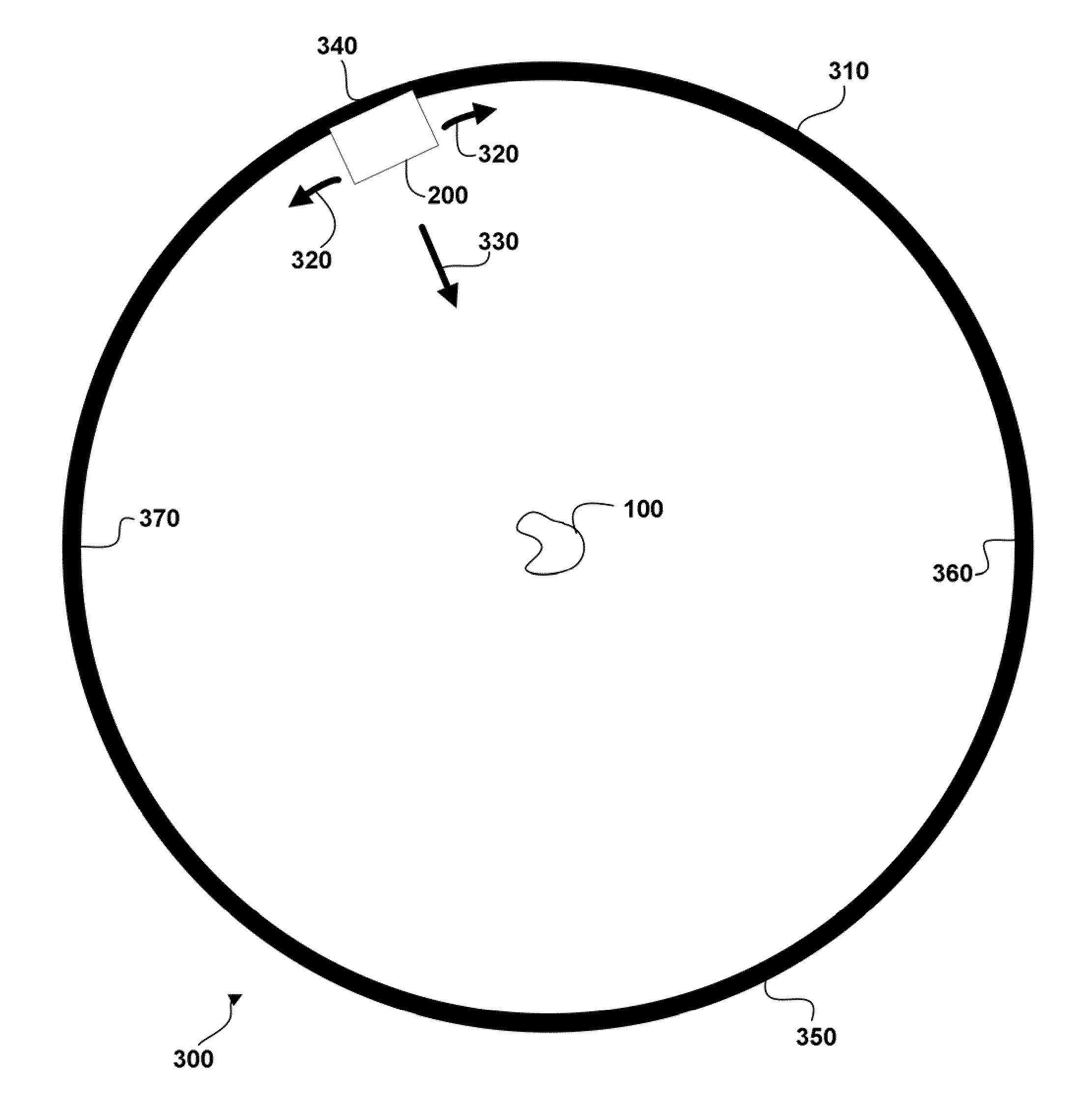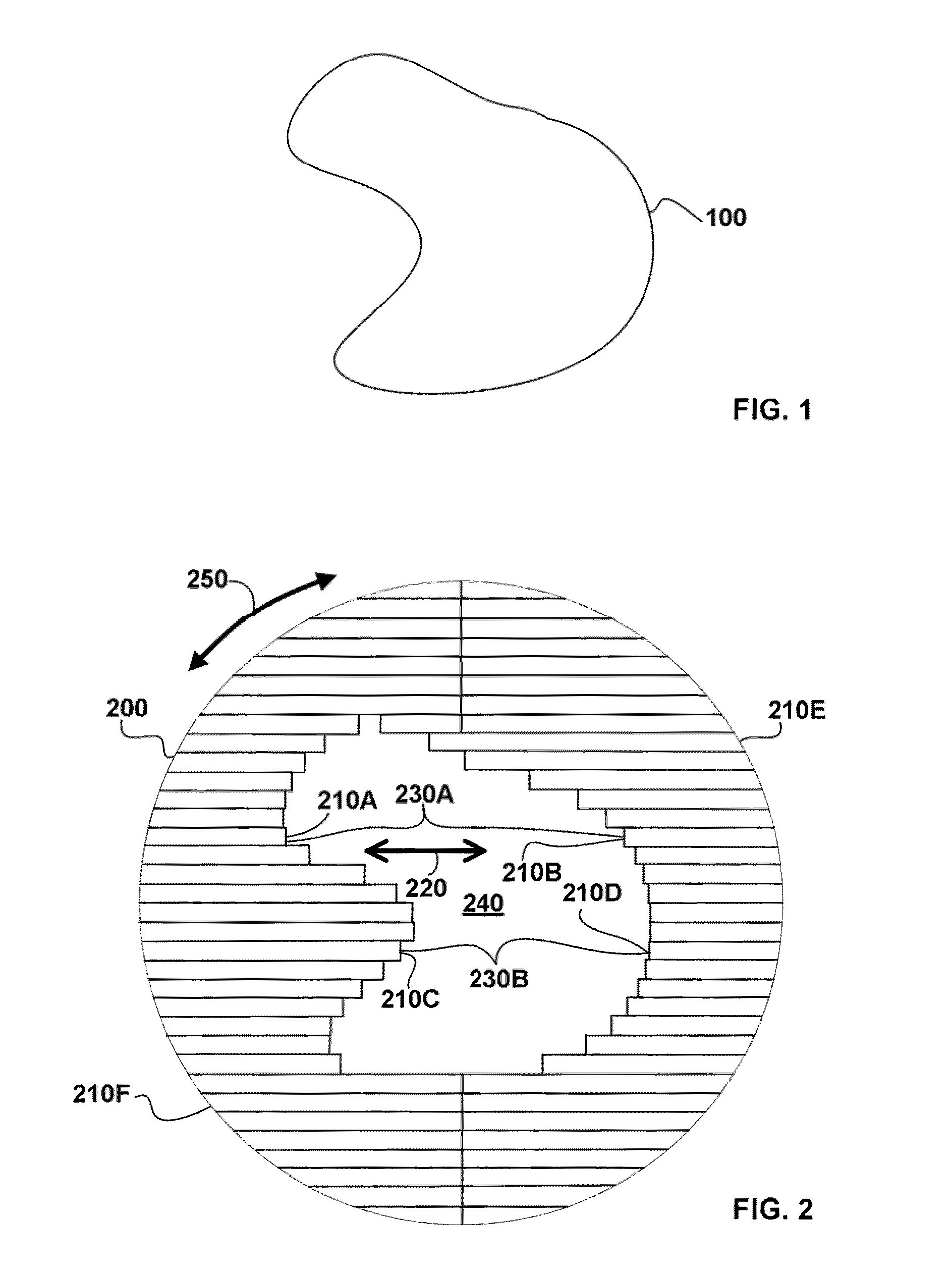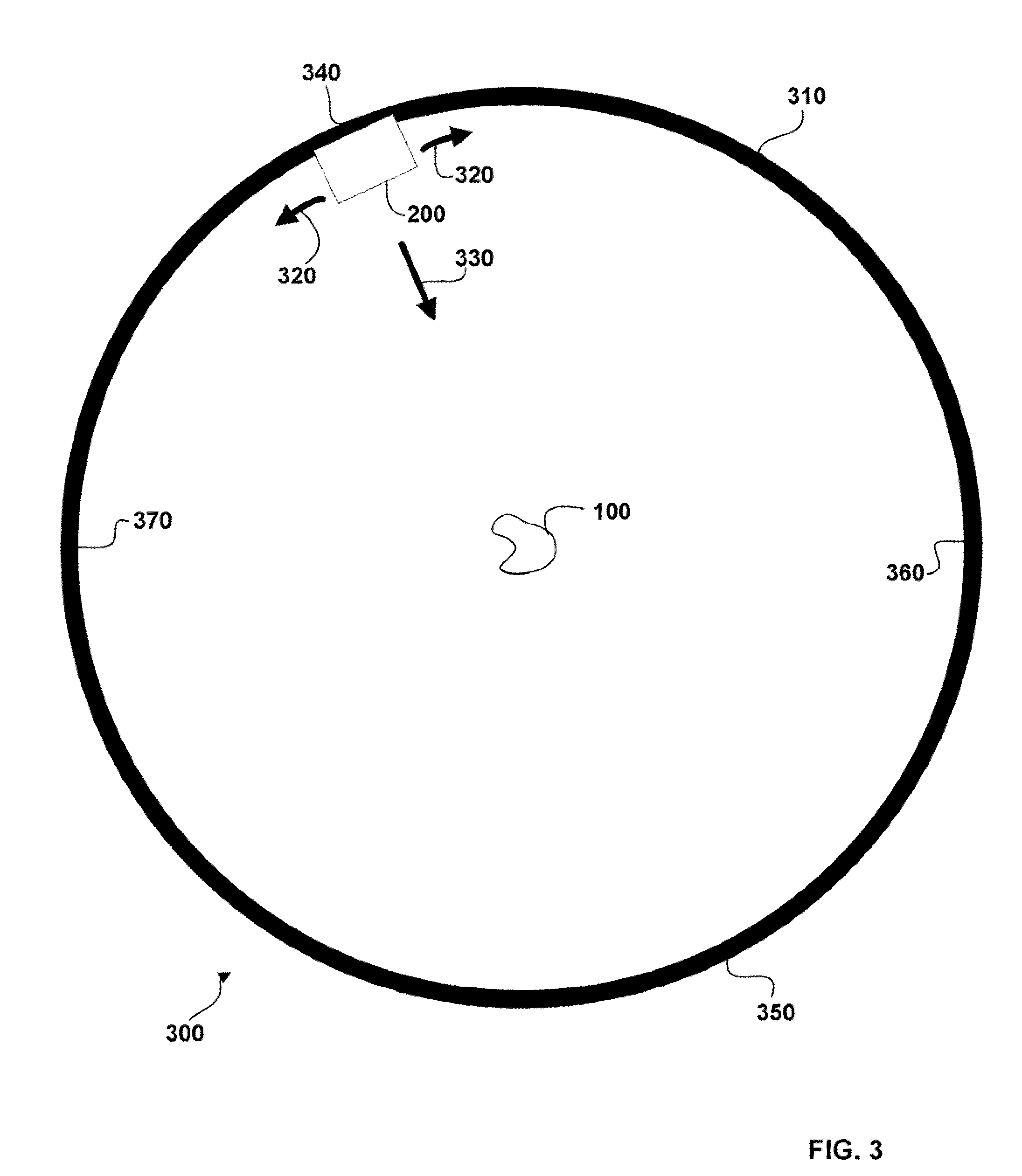Treatment Plan Optimization Method For Radiosurgery
a radiosurgery and treatment plan technology, applied in the field of radiosurgery, can solve the problems of inability to recommend one-session treatments without such a skeletal fixation device, inconvenient radiosurgery, and more difficult to use in irregular areas
- Summary
- Abstract
- Description
- Claims
- Application Information
AI Technical Summary
Benefits of technology
Problems solved by technology
Method used
Image
Examples
Embodiment Construction
[0023]The invention includes systems and methods for providing radiosurgery treatment to a patient by combining methods from both traditional radiosurgery and radiotherapy so that a dose sufficient to kill the targeted tissue is applied while allowing a steep drop off, or gradient, in adjacent areas so that other areas of the brain or nearby structures such as the optic nerve are not damaged. The treatment plan is optimized by using both measures known in the art along with a new gradient index or curve that indicates the amount of the drop off at the border between the target area and the surrounding tissues.
[0024]Systems and methods using the present invention will include, for example, a beam source configured to provide a beam of therapeutic radiation. The beam of radiation is shaped by, for example, a multi-leaf collimator on an aperture that is moved, e.g., rotated, around a treatment volume in the patient using a gantry. The treatment volume typically includes a tumor or othe...
PUM
 Login to View More
Login to View More Abstract
Description
Claims
Application Information
 Login to View More
Login to View More - R&D
- Intellectual Property
- Life Sciences
- Materials
- Tech Scout
- Unparalleled Data Quality
- Higher Quality Content
- 60% Fewer Hallucinations
Browse by: Latest US Patents, China's latest patents, Technical Efficacy Thesaurus, Application Domain, Technology Topic, Popular Technical Reports.
© 2025 PatSnap. All rights reserved.Legal|Privacy policy|Modern Slavery Act Transparency Statement|Sitemap|About US| Contact US: help@patsnap.com



